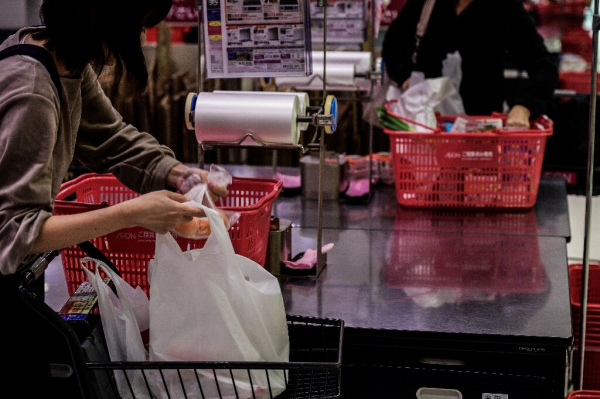At Eco Plastic, the plastic bag manufacturing process follows strict standards from raw materials to finished products. Using HDPE, LDPE, LLDPE, and eco-friendly biomaterials, every stage is monitored with rigorous quality control to ensure durability, appearance, and environmental safety.
.png)
Today, plastic bags have become an essential part of daily life and business operations. From supermarkets and convenience stores to industrial packaging, they provide convenience, cost efficiency, and versatility. Yet few people realize that producing a seemingly simple plastic bag involves a carefully managed process — from raw material selection to production and quality testing.
At Eco Plastic, quality and environmental responsibility are our top priorities. That’s why our entire manufacturing process complies with international standards, relies on carefully selected materials, and applies modern production technologies.
.png)
1. What Materials Are Used to Make Plastic Bags?
The plastic bag production process at Eco Plastic primarily involves the following materials:
- HDPE (High-Density Polyethylene): Known for its strength, high tensile durability, and load resistance — ideal for heavy-duty bags and industrial garbage bags.
- LDPE (Low-Density Polyethylene): Softer, clearer, and more flexible — commonly used for food bags, garment bags, and lightweight packaging
- LLDPE (Linear Low-Density Polyethylene): Combines flexibility with strength, suitable for thinner films that must still withstand pressure.
Biomaterials:
- EPI: A pro-degradant additive that enables plastic to break down under certain environmental conditions.
- D2W: An oxo-degradable additive that accelerates decomposition when exposed to oxygen and sunlight.
- OXO additives: Similar function to D2W.
- Biomass / Biodegradable resins: Bio-based plastics that degrade more easily in aerobic environments with microbial activity.
Other supplementary materials include color pigments, printing inks, UV stabilizers, talc, or fillers that enhance stiffness or optimize cost.
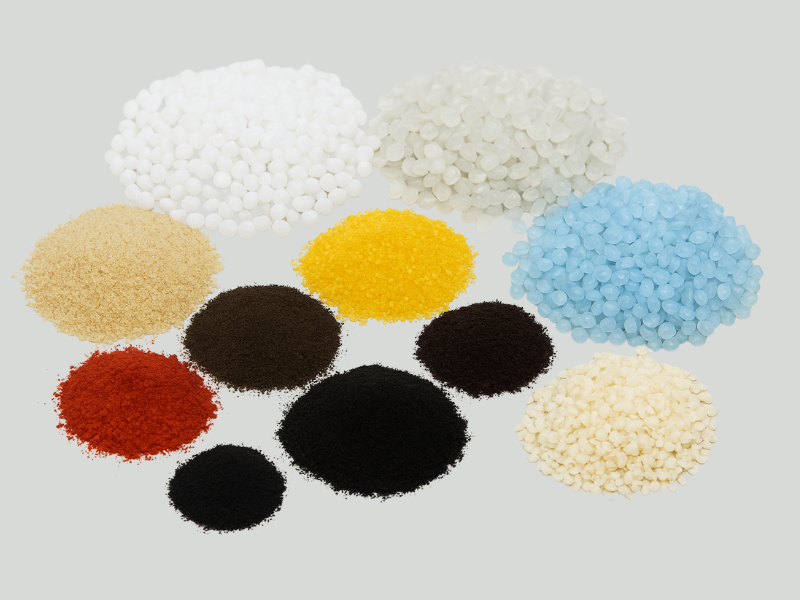
2. Step-by-Step Plastic Bag Manufacturing Process at Eco Plastic
2.1 Raw Material Storage and Inspection
- Receiving: Polyethylene resin pellets (HDPE, LDPE, LLDPE), biomaterials, and additives (EPI/D2W/OXO), plus inks and stabilizers, are delivered.
- QC inspection: Quality control checks for moisture levels (critical for film blowing and printing), melt flow index, density, and impurities.
- Storage: Approved materials are bagged, labeled (type, supplier, batch, date), and stored in a dry, controlled warehouse away from moisture and direct sunlight.
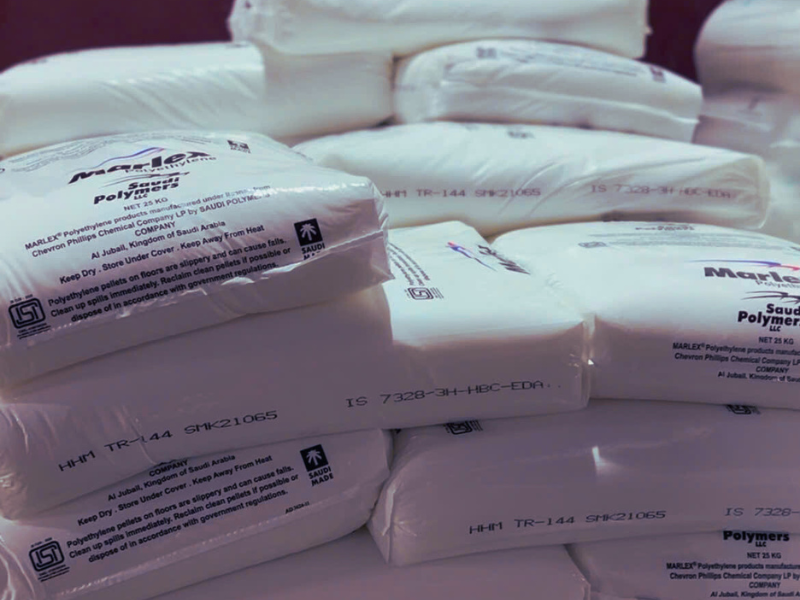
Raw Material Storage and Inspection
2.2 Mixing
- Formula preparation: Materials are measured and selected according to a pre-defined ratio provided by process engineers.
- Mixing equipment: Industrial mixers blend resin pellets with additives for 15–30 minutes, depending on batch size.
- QC monitoring: Supervisors and QC staff check uniformity, moisture, and color consistency. Samples are documented in quality control sheets.
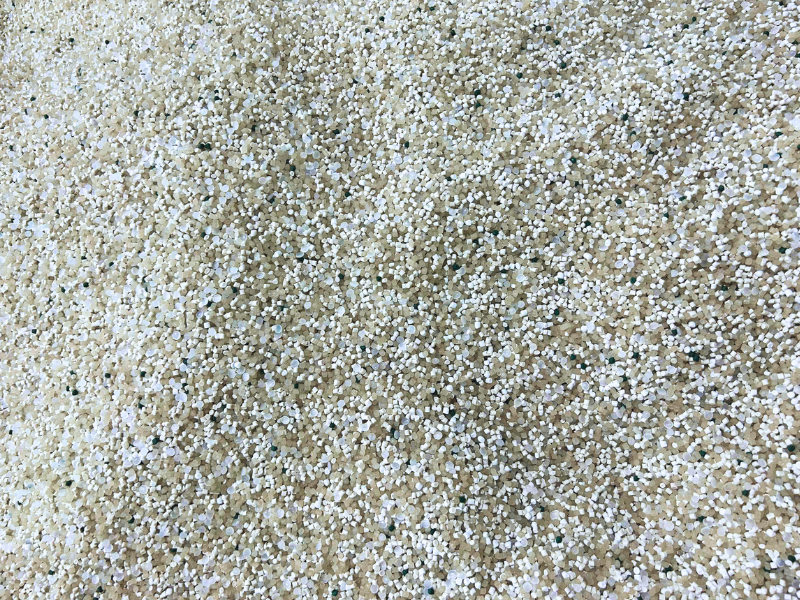
Mixing
2.3 Blown Film Extrusion & Printing
Blown Film Extrusion
- The mixed granules are fed into the blown film machine – melted at high temperature
- The melt is extruded through a ring die to form a bubble film.
- Air is blown inside to create pressure to expand the film.
- The bubble film is cooled (by air or fan) to keep its shape.
- The film is pulled and pressed through rollers to achieve the required thickness and width
Printing
- If the bag has a logo or image printed on it: use flexo or gravure printing, depending on the design.
- The ink must be suitable for the plastic: adheres well when the film is still hot, is bendable, and does not crack when stretched.
- Check the color, uniformity, and distortion rate when printing.
QC in this stage
- Check the film thickness at different points – use a micrometer.
- Tensile strength, transparency/opacity of the film.
- Mechanical properties: tensile test, tear test (if required).
- Does the printed color deviate from the standard sample?
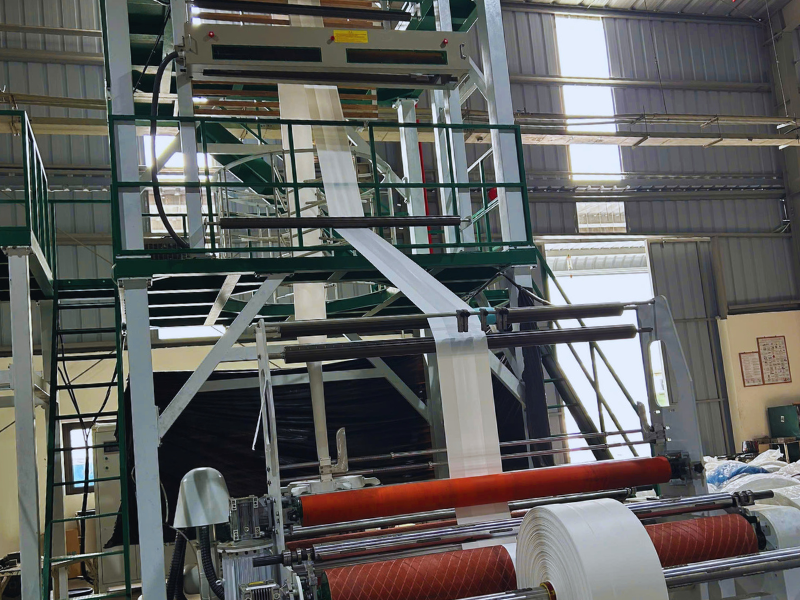
Blown Film Extrusion & Printing
2.4 Bag Making – Inspection – Packaging
Cutting & welding / sealing
- The semi-finished film roll is transferred to the cutting machine, heat sealing machine to form the bag: sew the edge, weld the bottom, weld the handle (if any), cut to size.
- Special types of bags: bags with tear holes, punched bags, drawstring bags, drawstring bags.
Check the quality of the bag
- Check the bottom and handle seams for leaks or not.
- Check the width, length, thickness.
- Check the weight of the bag to see if it meets the requirements.
- Check the strength / tear resistance / pull resistance if special requirements are met.
Packaging
- If the bag is packed in batches or by quantity
- The bag is neatly folded, weighed and checked the weight of the box.
- Attach labels, information stamps: bag type, size, raw materials, production batch code, production date.
.png)
Bag Making - Inspection - Packaging
2.5 Finished Goods Warehouse
After packaging, the finished product is transferred to the finished product warehouse:
- Stacked on pallets or into packages/cartons.
- The warehouse QC coordinates with warehouse staff to check the quantity, batch code, and damaged outer packaging.
- Set the storage location clearly, easy to access - avoid moisture, avoid strong light if there are decomposing additives (decomposing types can be sensitive to light/oxygen).
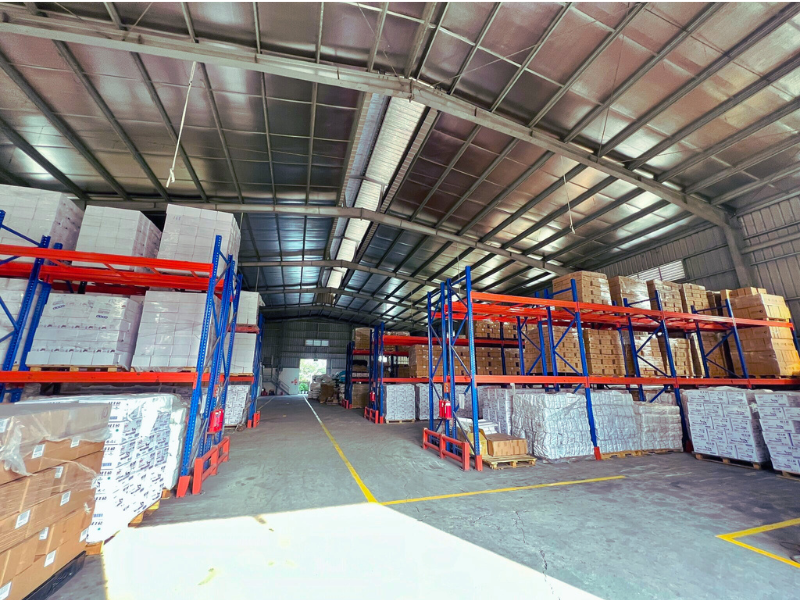
Finished Goods Warehouse
3. Frequently Asked Questions (FAQs)
3.1 When were plastic bags invented?
Plastic bags were invented in 1965 by Swedish engineer Sten Gustaf Thulin, who designed the classic T-shirt style bag. Earlier, in 1933, polyethylene — the main raw material for plastic bags — was first discovered.
3.2 What is the defect rate in plastic bag production?
Thanks to rigorous quality control, Eco Plastic maintains a defect rate of only around 1–2%.
3.3 What factors affect plastic bag quality?
Bag quality depends on raw material selection, mixing ratios, extrusion and printing technology, and strict QC inspections at every stage.
Conclusion
Every high-quality plastic bag goes through a carefully monitored production system. At Eco Plastic, the process is standardized — from selecting HDPE, LDPE, and LLDPE resins to film extrusion, printing, cutting, and final packaging. If you’re looking for a trusted partner to supply durable and eco-friendly plastic bags, Eco Plastic is ready to provide tailored solutions to meet your business needs.

